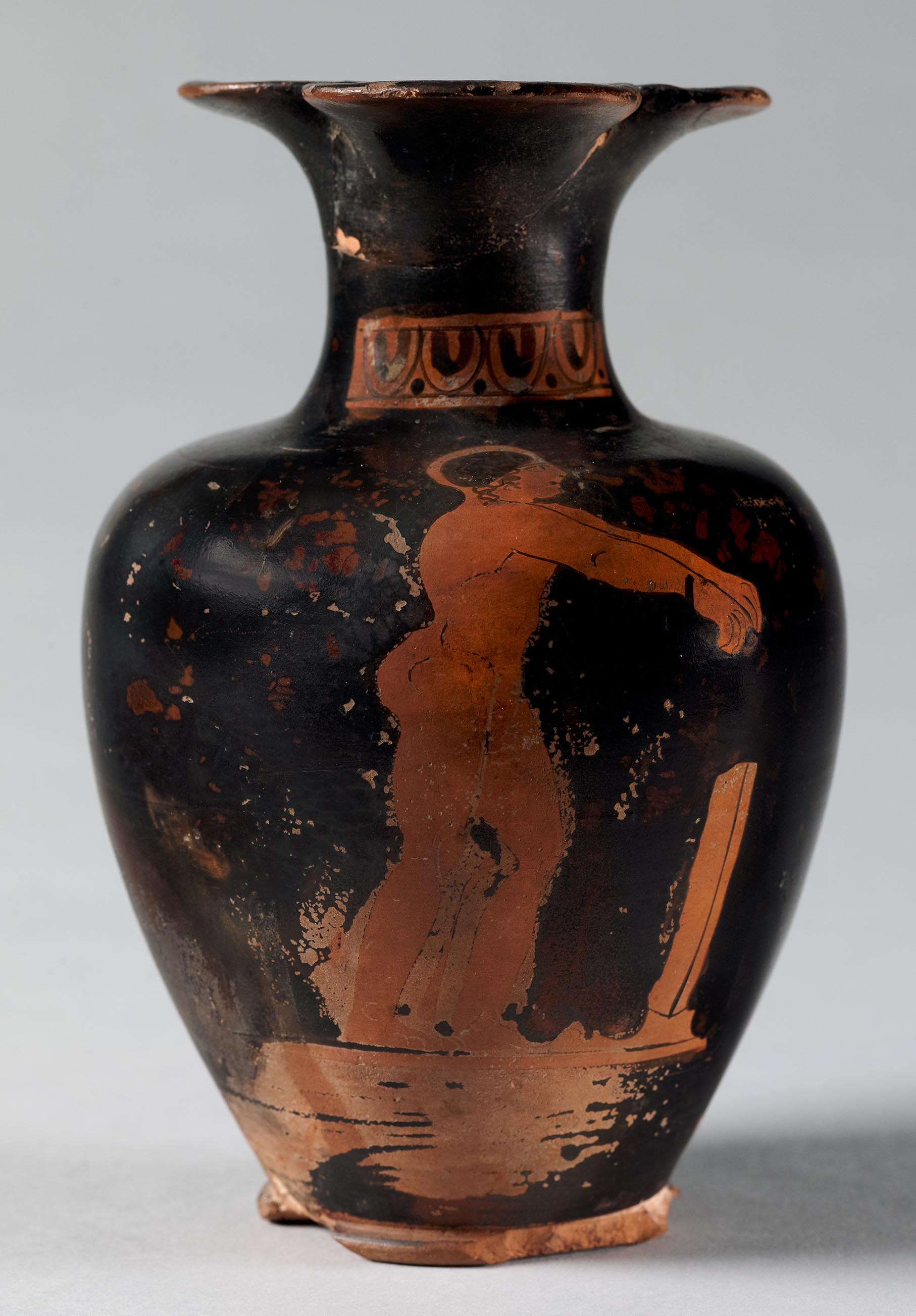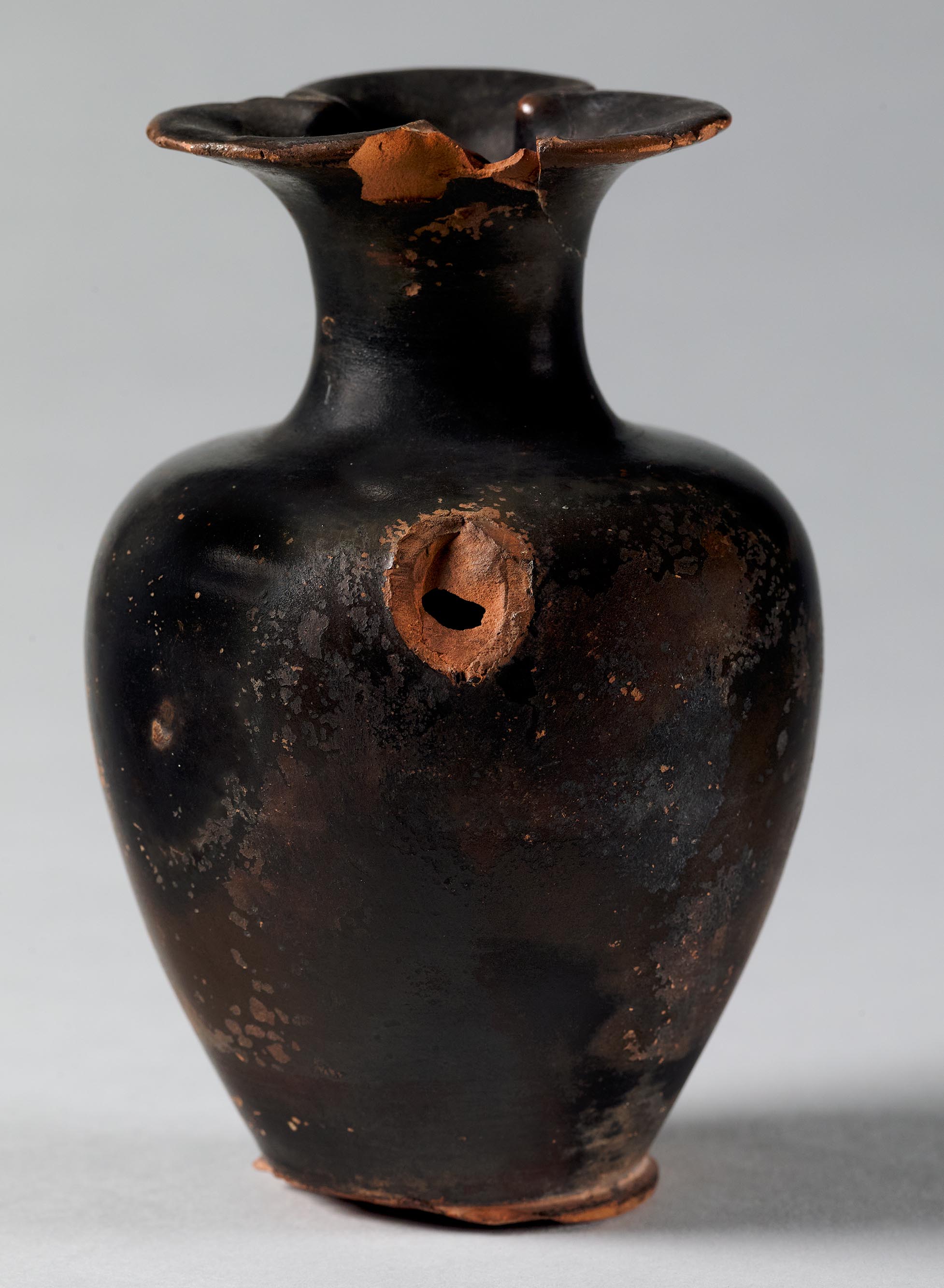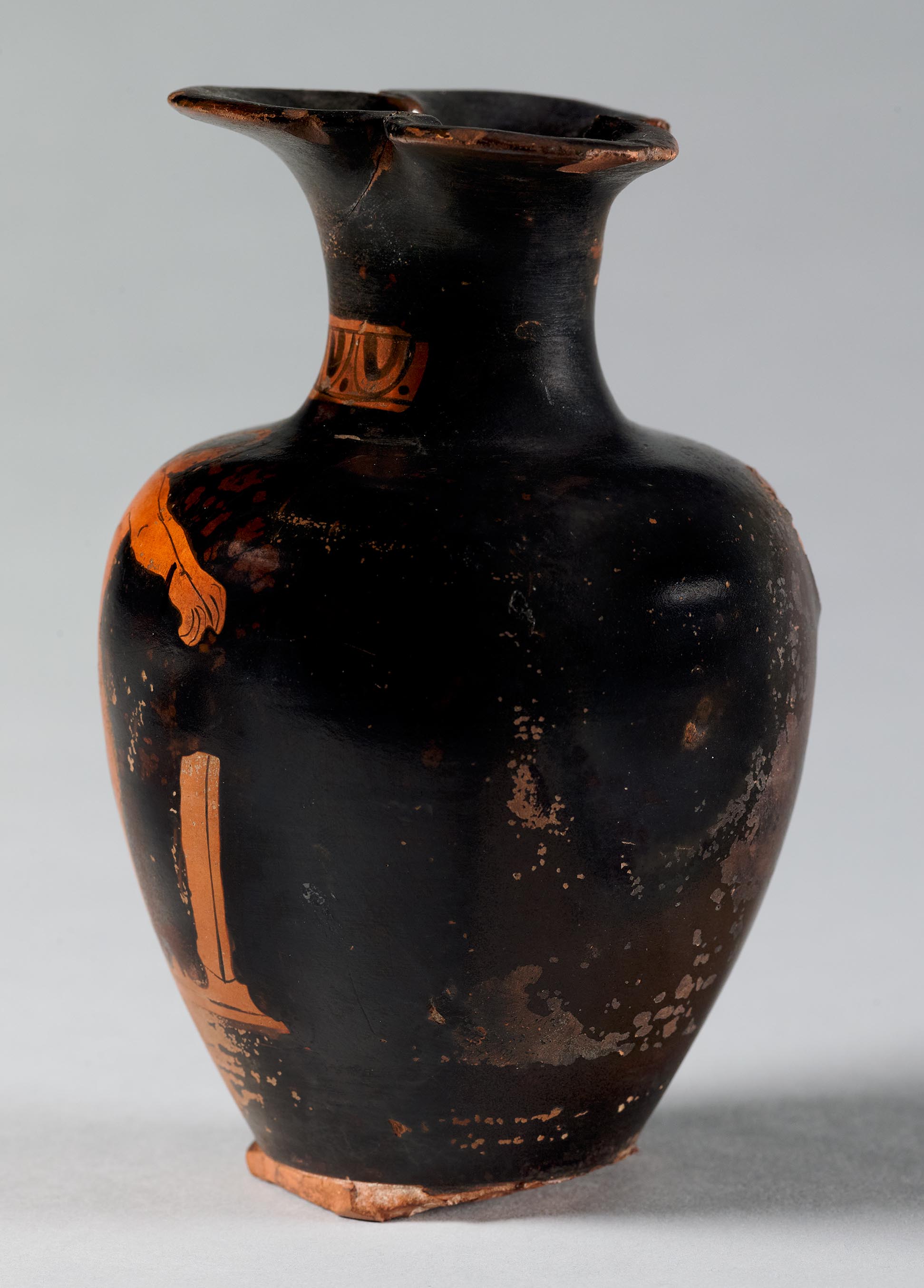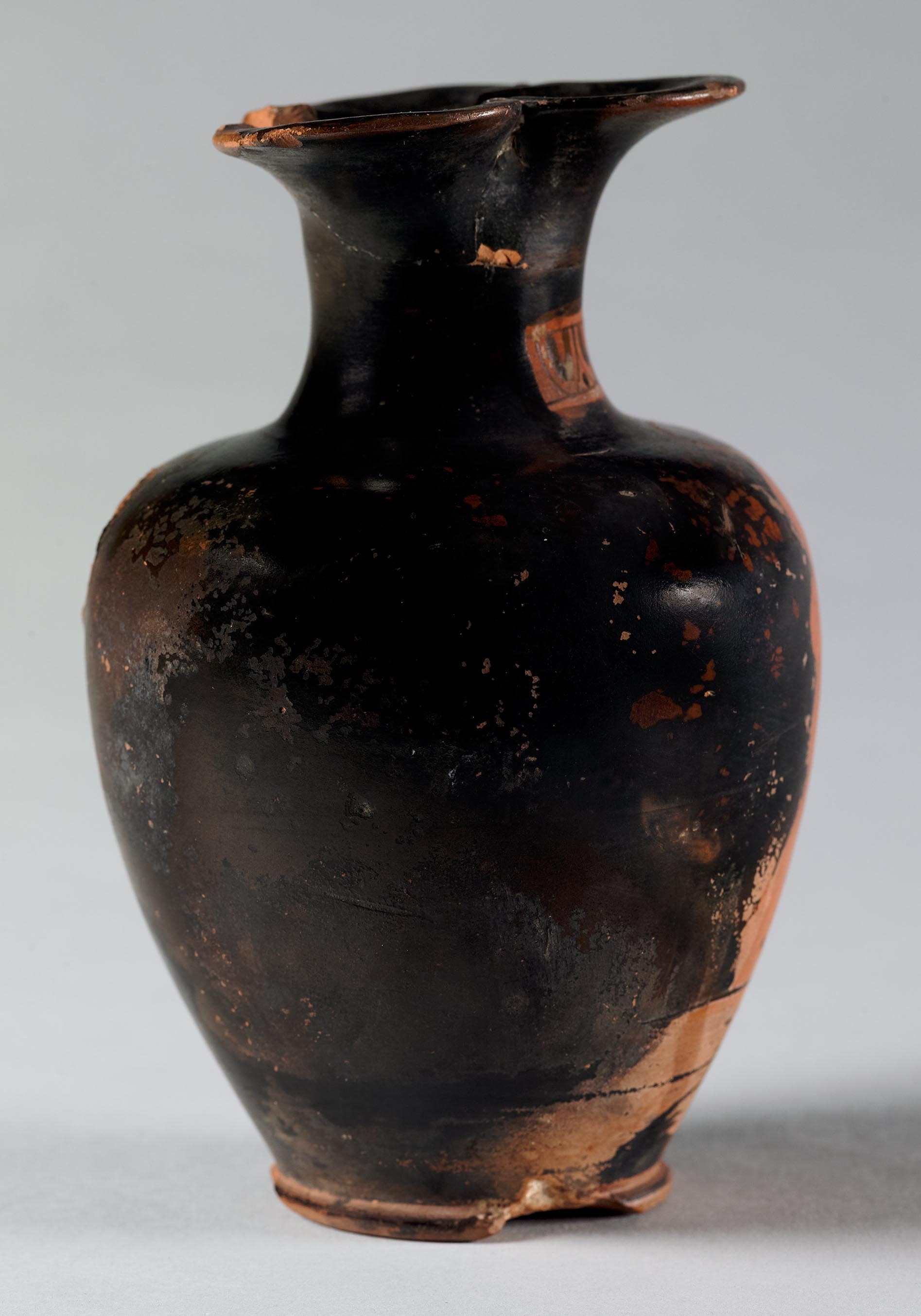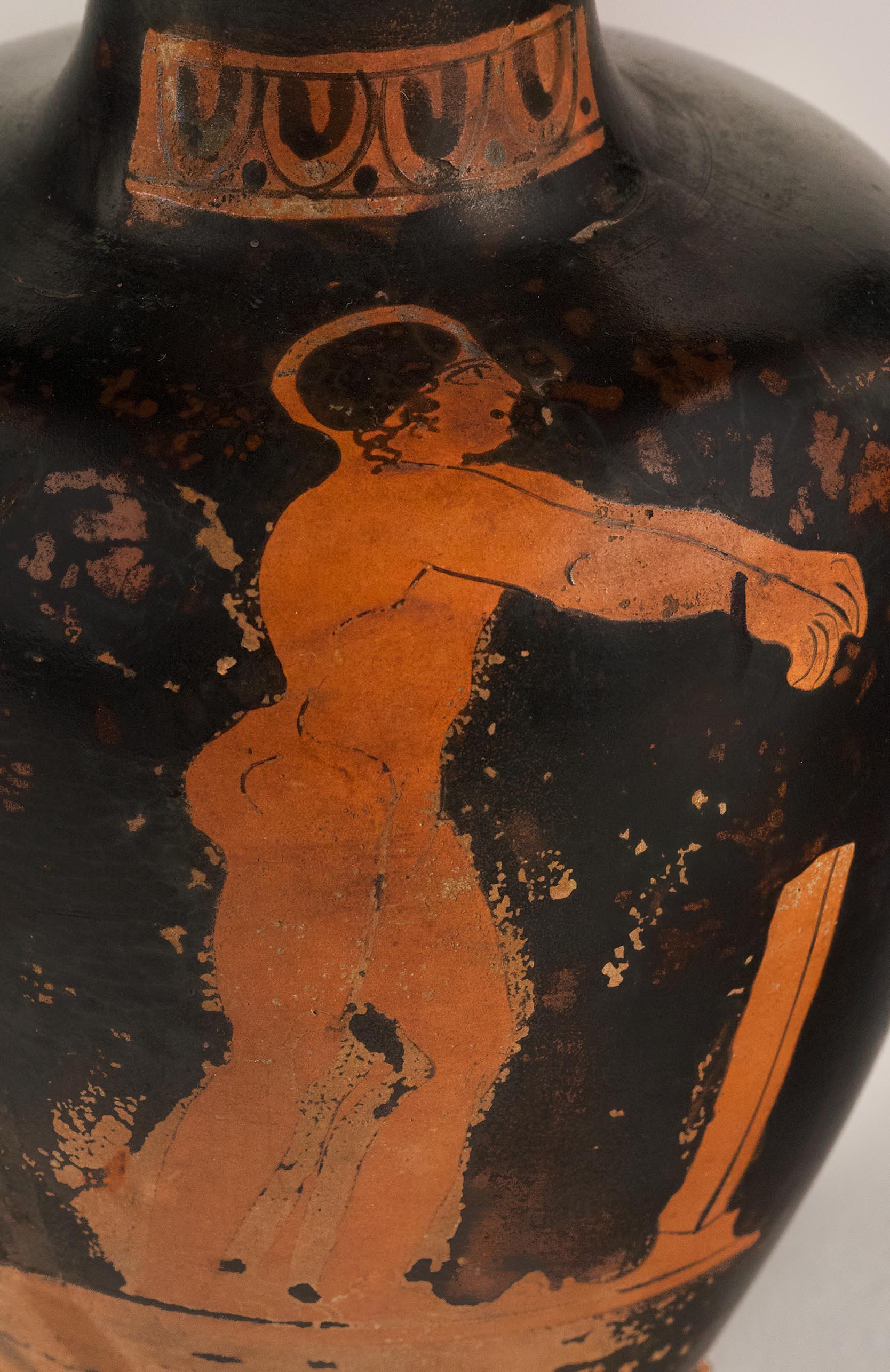Provenance
1943, gift, Mr. and Mrs. Allan Marquand (Princeton, NJ) to Princeton University. Said to be from Pergamon.
Shape and Ornament
Trefoil mouth. Narrow neck with short band of ovolo at its base. Interior of mouth and neck black. Tapering ovoid body. Reserved band below the unframed figure. Disk foot; underside reserved.
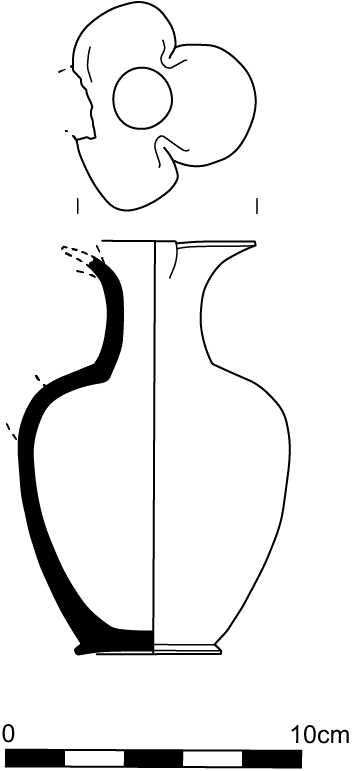
Subject
Athlete. The single nude athlete, a beardless youth, stands in profile to the right, his arms outstretched before a starting post. His weight rests on his right leg, with his left leg flexed and slightly advanced.
Attribution and Date
Unattributed. Late fifth century BCE.
Dimensions and Condition
h. 14.0 cm; diam. 9.2 cm; diam. of mouth (lateral) 7.2 cm; diam. of mouth (back to front) 6.2 cm; diam. of foot 5.0 cm. Handle lost, with a hole on the reverse where it joined the upper body and further losses where it met the trefoil mouth. Mouth mended from large pieces. Body intact. Foot broken in multiple places: traces of glue suggest the breaks were once restored with another fragment, no longer preserved. Surface worn, with significant losses to black gloss below the groundline and on either side of the athlete’s legs. Many relief lines used for the anatomical details are heavily worn. Gloss misfired mottled red on either side of the youth’s upper body and head. Black mark on the athlete’s right wrist appears to be modern.
Technical Features
The painter seems not to have filled the space between the youth’s legs after adding the eighth-inch lines.
Bibliography
Unpublished.
Comparanda
Small oinochoai of shape 2, with simple ornamental designs and rather hasty figural drawing, often with nude athletes, are produced with frequency in the late fifth and fourth centuries. The principal source is the workshop of the Fat-Boy Group, for which see Abbreviation: ARV2J. D. Beazley. Attic Red-Figure Vase-Painters. 2nd ed. Oxford, 1963 1484–94, 1695–96, 1708; Abbreviation: ParalipomenaJ. D. Beazley. Paralipomena: Additions to Attic Black-Figure Vase-Painters and to Attic Red-Figure Vase-Painters. Oxford, 1971 497–98; Abbreviation: BAdd2Carpenter, T. H., ed. 1989. Beazley Addenda: Additional References to ABV, ARV2, and Paralipomena. 2nd ed. Oxford: Published for the British Academy by Oxford University Press. 382. The Fat-Boy Group, however, almost exclusively depicted multi-figural compositions, commonly an athlete between two youths. In addition, they predominantly decorated oinochoai with black tongues above and ovolo below the figural scene. In comparison with that of Princeton’s oinochoe, the figural drawing of the Fat-Boy Group appears hasty and untidy: cf., inter alia, the nude Eros on Osnabrück 100 (Abbreviation: ARV2J. D. Beazley. Attic Red-Figure Vase-Painters. 2nd ed. Oxford, 1963 1708.136 ter; Abbreviation: BAPDBeazley Archive Pottery Database. http://www.beazley.ox.ac.uk 275726); the nude athlete on Ferrara 37398 (Abbreviation: ARV2J. D. Beazley. Attic Red-Figure Vase-Painters. 2nd ed. Oxford, 1963 1485.41 bis; Abbreviation: BAPDBeazley Archive Pottery Database. http://www.beazley.ox.ac.uk 230549). Beazley isolated a group of oinochoai of shape 2 as related to the Fat-Boy Group that show a single youth before a small pillar, and are thus compositionally more akin to Princeton’s oinochoe: cf. Laon 37.1046 (Abbreviation: ARV2J. D. Beazley. Attic Red-Figure Vase-Painters. 2nd ed. Oxford, 1963 1493.6; Abbreviation: BAPDBeazley Archive Pottery Database. http://www.beazley.ox.ac.uk 230753), which also has a reserved groundline and a narrow band of ovolo above the figure. Once again, the drawing, especially in the facial details, is more debased than that on Princeton’s oinochoe. This may suggest that Princeton’s oinochoe should be dated at the end of the fifth century, rather than into the fourth. The Shuvalov Painter was a prolific decorator of oinchoai of shape 2 between about 440 and 410 BCE, although his ornament and figural drawing is far more elaborate and careful. A closer parallel for the shape and figural drawing can be found on an unattributed vase once in the Zürich market, which shows a flying Eros spotlighted against the black gloss: once on the Zürich market (Arete, Galerie für Antike Kunst, Griechische Schalen und Vasen 20, auc. cat. [Zürich, 1983], no. 33; Abbreviation: BAPDBeazley Archive Pottery Database. http://www.beazley.ox.ac.uk 13546), on which, cf., in particular, the drawing of the contours of the hips and the detailing of the eyes. The proportions of the figures and the overall shape of the bodies are also quite similar, with small torsos, a deeply arched back, and high hips.
